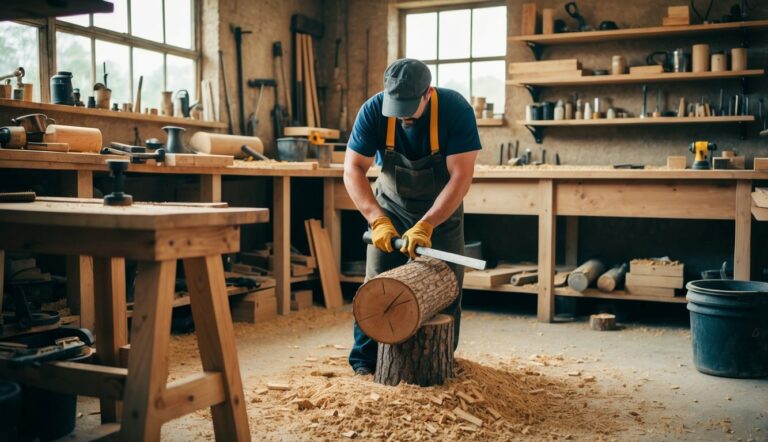 www.familyhandyman.com Here's a step-by-step guide on how to build a DIY wooden windmill, presented in the specified format.
www.familyhandyman.com Here's a step-by-step guide on how to build a DIY wooden windmill, presented in the specified format. Introduction: A Charming DIY Windmill Building a wooden windmill can add a touch of rustic charm to your garden or yard. This project requires some basic woodworking skills, but the result is a beautiful and functional piece of outdoor decor. This guide will walk you through the process from start to finish.
Materials and Tools You'll Need Before you begin, gather all the necessary materials and tools. This will ensure a smoother and more efficient building process. Here's what you'll likely need: Wood (pine, cedar, or redwood are good choices, select quantities based on plan) Screws (various sizes, wood screws are recommended) Wood glue Paint or stain (exterior grade) Nails Sandpaper (various grits) Measuring tape Pencil Saw (circular saw or hand saw) Drill (with various drill bits) Screwdriver Hammer Clamps Level Safety glasses Work gloves (Note: Ensure you acquire a detailed plan with specific wood dimensions before starting. Plans can be found online or in woodworking books.)
Step 1: Preparing the Base The base is the foundation of your windmill. It needs to be sturdy and level to support the rest of the structure. Cut the lumber for the base according to your plan. Assemble the base frame using screws and wood glue. Ensure the corners are square. Reinforce the corners with additional wood pieces if needed. Sand the base to smooth out any rough edges.
Step 2: Constructing the Tower The tower provides the height and support for the blades and top section of the windmill. Cut the lumber for the tower walls according to your chosen design. Windmills typically have four, six, or eight sides. Assemble the tower walls, using screws and wood glue. Use clamps to hold the pieces together while the glue dries. Ensure the tower walls are aligned properly and form a stable structure. Attach the tower to the base, using screws and glue for a strong connection.
Step 3: Building the Top Section (Housing for the Blades) The top section houses the rotating blades and allows the windmill to catch the wind. Cut the lumber for the top section's frame. This will often be a box-like structure that sits on top of the tower. Assemble the frame using screws and glue. Ensure it's strong and stable. If you plan for the top to rotate, incorporate a swivel mechanism or bearing at this stage. (Follow the plan's specific instructions for rotation) Attach the top section to the tower.
Step 4: Creating the Blades The blades are what catch the wind and give the windmill its iconic appearance. Cut the lumber for the blades according to the plan. Blades typically have a curved or angled shape. Shape the blades using a saw and sandpaper. Ensure they are balanced for smooth rotation. Attach the blades to a central hub or rotor. This hub should be designed to attach to the rotating mechanism in the top section. Test the balance of the blades and adjust as needed.
Step 5: Assembling the Windmill Now, put all the components together. Attach the blade assembly to the rotating mechanism in the top section. Make sure the blades can spin freely without obstruction. Check for any wobble or instability in the structure.
Step 6: Finishing and Painting Protect your windmill from the elements and give it a decorative finish. Sand all surfaces to prepare them for painting or staining. Apply a primer coat, followed by your chosen paint or stain. Use exterior-grade products for durability. Add any decorative details, such as windows, doors, or trim.
Step 7: Installation and Placement Choose a suitable location for your windmill. Select a level spot in your yard or garden. Consider the prevailing wind direction to maximize the windmill's visibility and operation. Secure the windmill to the ground to prevent it from tipping over in strong winds. You might use stakes or anchor bolts.
Conclusion: Enjoy Your Handcrafted Windmill Congratulations! You've successfully built a wooden windmill. Step back and admire your handiwork. This DIY project is a rewarding way to add character and charm to your outdoor space. Remember to periodically inspect and maintain your windmill to ensure its longevity and performance.
Free Artisan Woodworking Craft Image
 stockcake.com
stockcake.com History Of Woodworking: From Ancient Craftsmanship To Modern Techniques
 www.communitywoodworkers.com
www.communitywoodworkers.com Woodworking For Beginners: Everything First-timers Need To Know
 www.familyhandyman.com
www.familyhandyman.com
0 komentar:
Posting Komentar